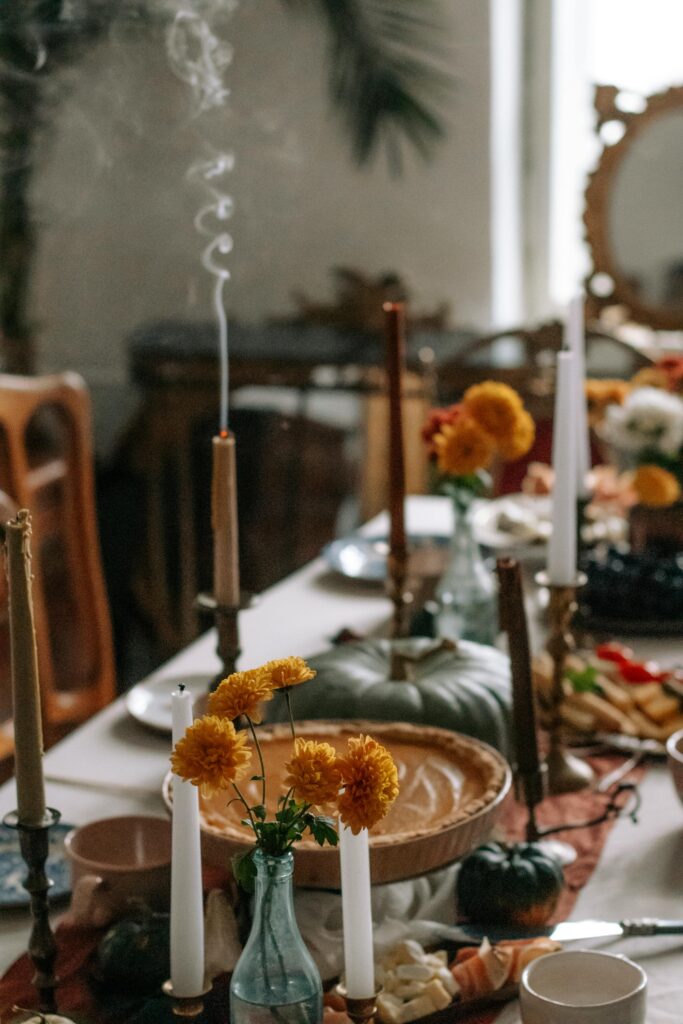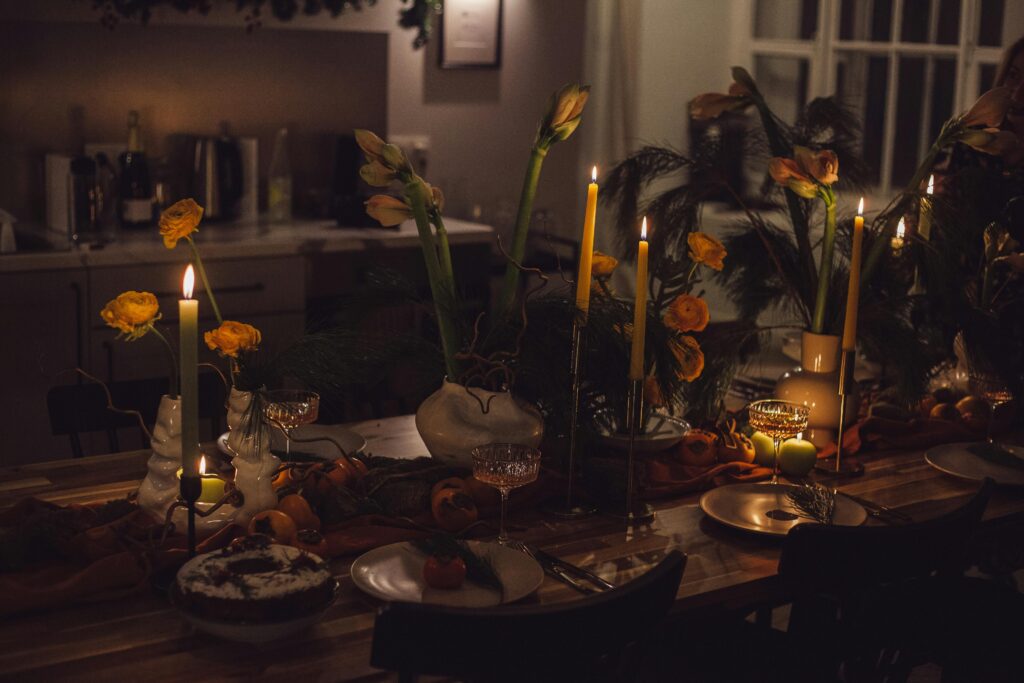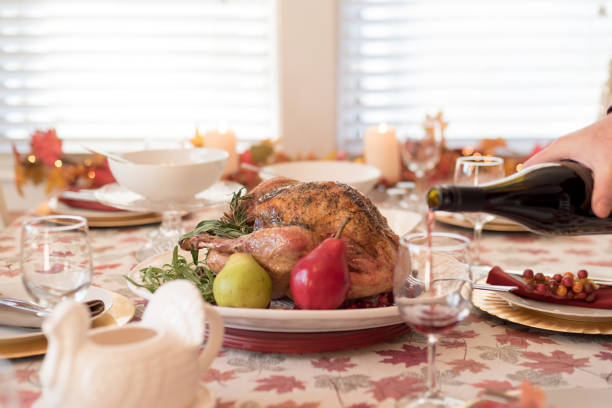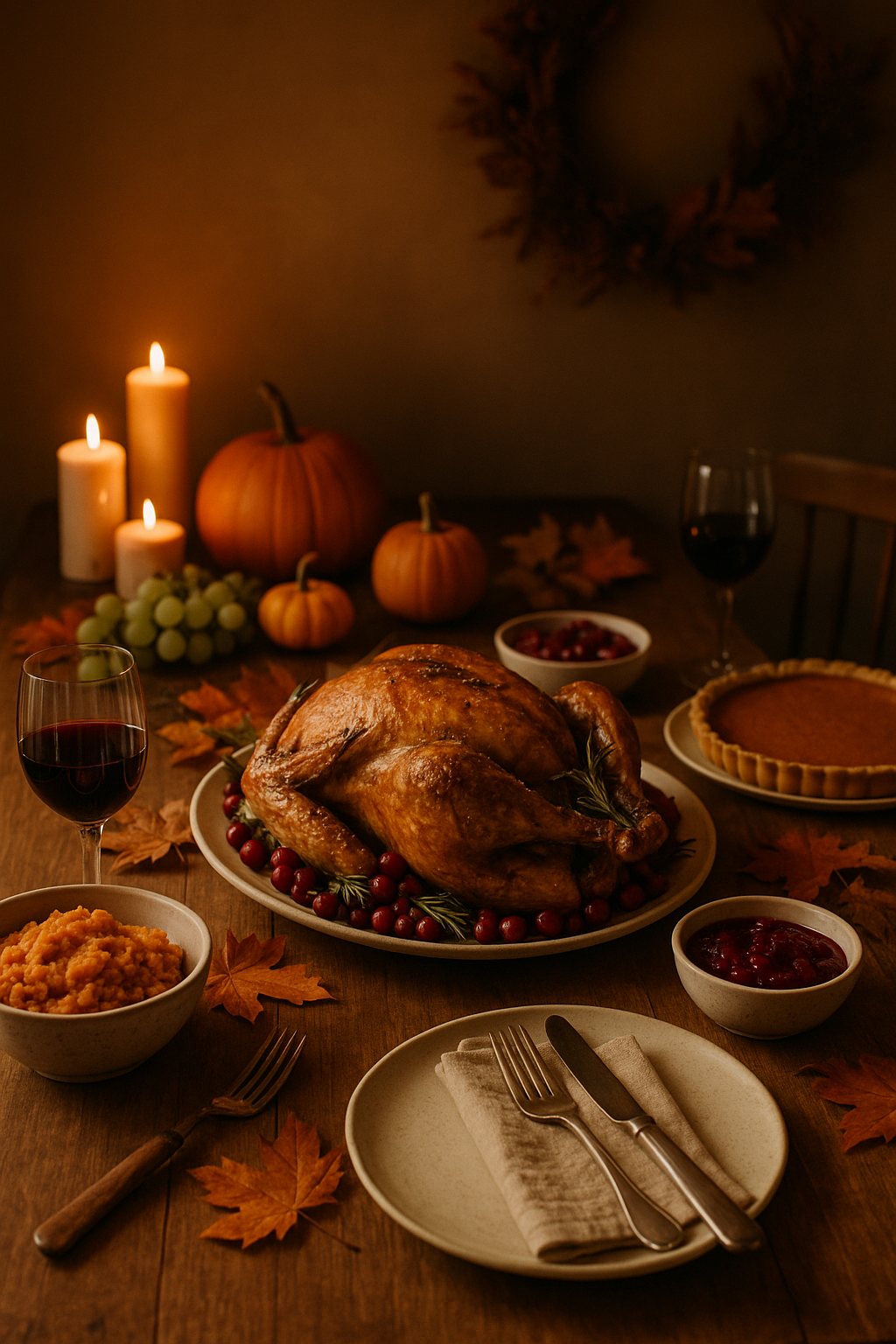
A Thanksgiving table is more than a place to gather—it is a visual celebration of gratitude, abundance, and connection. A well-designed tablescape has the power to set the emotional tone for the entire holiday, transforming a simple meal into a cherished memory. Whether you prefer the layered richness of classical design or the quiet refinement of minimalism, a thoughtful approach to color, texture, and composition makes the Thanksgiving table feel truly meaningful.
Classical Thanksgiving Tablescapes: Rich, Layered, and Timeless
Classical tablescapes draw inspiration from European historic dining traditions—ornate linens, gilded accents, natural greenery, and artful layering. This style embraces abundance without feeling cluttered. It balances tradition with warmth, evoking a sense of ceremony without being overly formal.
Deep burgundy, antique gold, warm ivory, and forest green serve as the classical palette’s core foundation. These tones echo harvest themes and pair beautifully with candlelight. China with delicate rims or vintage motifs adds elegance, while crystal or colored glassware creates soft refracted light that dances across the table.
In classical styling, texture matters as much as color. Linen table runners, embroidered napkins, heavy-weight stoneware, organic greenery, and brass candleholders add visual depth. An arrangement of seasonal fruits—pomegranates, pears, figs, and apples—nods to 17th-century still-life paintings while adding natural beauty.
A classical tablescape is meant to feel collected, curated, and nostalgic. It’s a space where history and hospitality come together.
Minimalist Thanksgiving Tablescapes: Quiet Elegance in Every Detail

Minimalist design celebrates restraint, balance, and intentionality. Instead of layering elements for grandeur, this approach highlights the power of simplicity. A minimalist Thanksgiving table doesn’t shy away from beauty; it simply allows space for breath and clarity.
The palette often centers on neutrals: soft whites, muted taupes, pale grays, and warm wood tones. A single branch of eucalyptus, a ceramic vase with clean lines, or a scattering of tea lights adds a sense of calm. Matte ceramics, handcrafted dinnerware, and natural textures—stone, linen, and raw wood—give minimalist tables a serene and modern warmth.
Minimalism emphasizes function elevated to art. Every item has a purpose and a place. The space between the objects becomes part of the aesthetic, allowing the food itself to take center stage.
If classical tablescapes celebrate abundance, minimalist tables honor clarity and presence. The effect is peaceful, elegant, and refreshingly modern.
The Color Theory of Food Presentation
Thanksgiving meals are naturally full of warm, earthy colors—golden turkeys, orange squash, ruby cranberries, and caramelized edges. Understanding color theory helps amplify the beauty of the meal and the visual harmony of the table.
Warm Tones Create Appetite
Warm colors—orange, red, gold, deep brown—stimulate hunger and comfort. This is why dishes like roasted vegetables, gravy, and cranberry sauce look particularly appealing in warm surroundings.
Contrast Makes the Food Pop
Food looks best when it stands out against its background.
• Light-colored plates make rich, dark foods feel more vibrant.
• Dark stoneware adds dramatic contrast to bright ingredients like squash or herbs.
Green Balances the Plate
Small touches of green—sage, thyme, rosemary, kale—refresh heavy food visually and enhance presentation through natural contrast.
Textures Create Visual Appeal
Crispy, creamy, glossy, and matte foods look more enticing when the table setting supports their textures instead of competing with them.
Centerpieces That Tell a Story

A meaningful Thanksgiving centerpiece should reflect both the season and the atmosphere you want to create. Instead of defaulting to flowers alone, consider incorporating natural elements that spark conversation or evoke nostalgia.
• Seasonal fruits and vegetables arranged in ceramic or wood bowls
• Branches, dried grasses, or wheat for sculptural height
• Candles at staggered heights to create movement and warmth
• Heirloom pieces such as vintage pitchers or inherited serving trays
Centerpieces should be low enough that guests can see each other across the table—connection is the true focus of the holiday.
Practical Tips for Designing Your Thanksgiving Tablescape
A few simple design principles can elevate any style—classical, minimalist, or something in between:
• Mix textures for depth: Pair linen with wood, metal with greenery, matte plates with glossy glassware.
• Stick to a palette of 2–3 main colors: It keeps the table cohesive and intentional.
• Keep the center low: Ensure guests can converse easily.
• Use the food as part of the décor: Pies, bread, fruit, and herbs add color naturally.
• Play with height: Candles, branches, and stacked plates create visual rhythm.
• Don’t overcrowd the table: Leave room for platters and passing dishes—beauty must meet practicality.
Designing a Table That Feels Like Home

Thanksgiving tablescapes are not about perfection—they’re about meaning. Whether your style leans classical or minimalist, a thoughtfully designed table enhances the experience of gathering. Color theory transforms the meal into visual art, while curated elements create an atmosphere of intimacy and gratitude.
Ultimately, the most beautiful tables are the ones that reflect who you are and how you celebrate. The warmth, the storytelling, the shared dishes—these are the true elements of a meaningful Thanksgiving.




